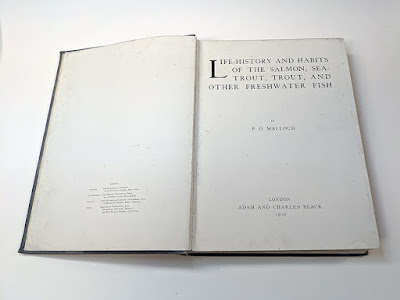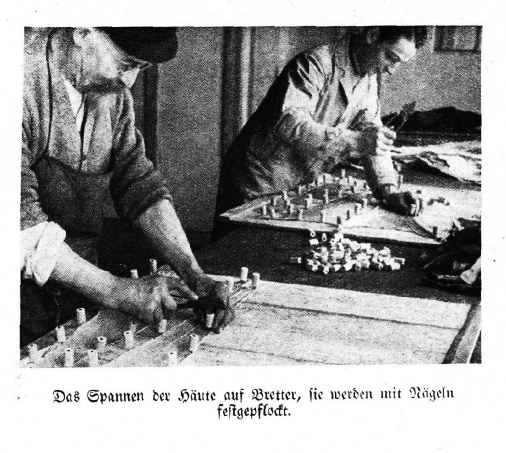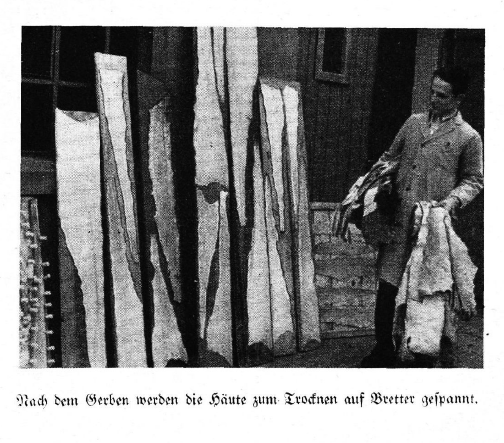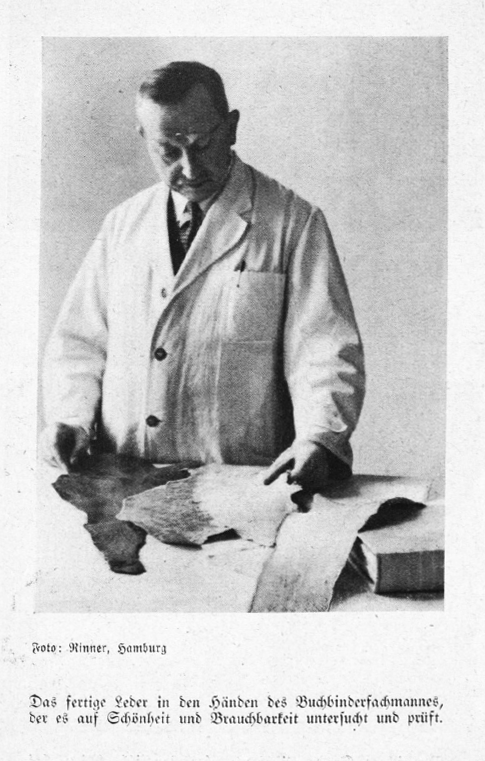As in the past 6 years, on May 31st, Ernst Collin's birthday (This would have been his 134th) I share updates from my research and findings into his life and work. Unfortunately, there seemed to be little new to share about the Collins in 2019 and other things intervened... However, thanks to another mass digitization project and some new acquisitions there are several interesting things to share this year. My text is all English this time to describe findings and images, but all text in images auf Deutsch, naturally.
The most significant of these was the digitization of the
Börsenblatt des deutschen Buchhandels (daily newsletter of the German book trades). The collection was digitized by the Sächsische Landesbibliothek – Staats- und Universitätsbibliothek (SLUB) in Dresden and features full text indexing and searching. While OCR is challenging at best with variances in paper, type quality, typefaces, I was able to identify a number of articles relating to Ernst Collin. Thank you to all those organizations and individuals who work to expose the literature in this way. I am also grateful that works are passing into the public domain again, in the US, so that volumes for 1923/24 becaume accessible. So, each year will bring new discoveries.
Corvinus Antiquariat Ernst Collin
 |
| Addressbuch entry from 1925 |
Ernst Collin opened his Corvinus Antiquariat in Charlottenburg on
October 15, 1923, during some of the worst of the hyperinflation period... Images below are from the Börsenblatt. The opening and range of inventory was also covered in the
Archiv für Buchbinderei, nr 10/11, vol 23, 1923.
 |
| Announcement of the Antiquariat being added to the Berlin directory |
 |
Announcement also indicating monthly exhibits of bibliophile
books and contemporary prints and drawings.
from same issue of the Börsenblatt, October 15, 1923. |
A mention in the issue of
December 28, 1923 concerned the publication of
his first catalog containing fine press books, fine bindings, and other bibliophilic texts. The introduction to the catalog was written by E.A.G. Bogeng, a prolific writer and scholar of the book and allied crafts, and also provided some vital details about Ernst's life. The opening coincided with Germany's period of hyperinflation.
Here an advertisement for an exhibition at the Antiquariat in February of 1924.
 |
| From die Weltbühne, 1924. |
 |
| Announcement of the exhibition at the Corvinus Antiquariat |
On December 5, 1924, the
Börsenblatt carried a notice that the
Antiquariat was moving from Charlottenburg to Stegliz, the address Ernst also used as editor of
Die Heftlade, Journal of the Jakob-Krause-Bund (J-K-B)
, an association of fine binders, and for his publication of
Paul Kersten in 1925...
 |
| Notice of the Antiquariat's move |
Finally, on March 17, 1927, the
Börsenblatt announced the
closure of the Antiquariat, 3ish years after its opening during the period of hyperinflation.
 |
| Closure notice |
Writings and Speaking
The
Boersenblatt also contained reports of Collin speaking publicly as well as containing several articles by him or referencing those in other publications. In the May 8, 1918 edition he wrote about bibliophiles and the art of binding in "
Bücherfreunde und Einbandkunst," on April 25, 1923 he stepped in for Fedor von Zobeltitz to give the welcoming talk at the opening of
Der Schöne Bucheinband, an exhibit of the J-K-B. This talk was also covered in the
Archiv für Buchbinderei. and on June 27, 1931 reviewed the "
internation book art exhibition" held in Paris that year. He did not go into the details of the German exhibitors to avoid the internal politics of that group... Some of these appeared in the "editorial" section of the
Börsenblatt. There was also a back-and-forth exchange with a publisher in response to an article of his in the
Tägliche Rundschau, another daily in which the publisher saw Collin's opinions on pricing as being unfair. It also mentioned an article in the
Deutsche Verleger of December 1, 1920 about the "cleansing" of foreign terms in the German book trades, "Fremdworterreinigung im deutschen Buchgewerbe." This topic also appeared in various bookbinding trade publications in the years between the World Wars.
The publication of the
Pressbengel was also mentioned and the topic of some discussion in the
Börsenblatt's October 30, 1922 edition. The announcement mentioned that it has taken a long time for fine bindings and books to receive the kind of recognition they deserve, and that despite the hard economic times, fine books still find willing buyers. It then goes on to describe the nature of the discussion between bibliophile and binder, other titles by Collin, and that like the
Heftlade (sewing frame) the
Pressbengel (
more here) is another essential tool of the bookbinder. Zobeltitz had reviewed the book for
Die Heftlade (
Nr 4, 1922), published by Collin for the J-K-B. The bookbinding, bibliophile, and arts communities were very interwoven...
 |
Notice about the Pressbengel. Note the price, an indicator
of the beginnings of the hyperinflation
that would get much worse in 1923. |
The
December 21, 1922 edition mentioned the
Pressbengel at the end of it's Christmas title list, that even if a book lover can't afford new clothes for their favorite books, that can at least read about it, amusingly in the
Pressbengel, closing with an acknowledgment of the increasingly bad economic situation and growing hyperinflation.
 |
| "If only there weren't that valuta (currency) hyperinflation" |
Below a tweet from the Director of the Sächsische Landesbibliothek – Staats- und Universitätsbibliothek (SLUB) that shows the levels of hyperinflation and the reaction of one publisher...
Ernst Collin in the Allgemeiner Anzeiger für Buchbindereien
I was also able to acquire an "imperfect"copy of the 1929
Allgmeiner Anzeiger für Buchbindereien (AAB), imperfect in the sense that for one or two issues, 1928 had been bound in instead of 1929. Those apprentices...
This issue contained several articles by Collin, including "Neue Arbeiten der Weimarer Fachschule" led by Otto Dorfner; two articles about bookbinding supplies and decorated papers being shown at the Leipziger Papiermesse (trade fair); "Ein halbes Jahrhundert Fachmann" about Paul Kersten's 50th year practicing and teaching in the trade; and directly connected to items in my collection, a review of
Musterbetriebe deutscher Wirtschaft (Model Corporations of German Industry) that was about the trade bindery E.A. Enders. I described that book in
my post here, especially pleased that it depicted my copy of the 1927
Jahrbuch der Einbandkunst published by the Meister der Einbandkunst. There was also an article about "Buchbinder in der Literatur," bookbinders appearing in literary works; a review "Bucheinband-Ausstellung in Berlin" about a bindings created by Kersten's students at the Lette Verein (and addition to the previously mentioned article). Also several other exhibit reviews, and a correction by Collin for omitting the binder Carl Funke from his article about the 25th anniversary of the Berliner Kunstklasse, first led by Kersten. Among those 1928 articles was one "Über die Kunst in der Buchbinderei" about the art in [fine] binding. Those articles will be added to the
bibliography of Collins writings soon.
As an added bonus, it also contained several of the issues of number 1 of the 1929 volume of the
Buchbinderlehrling, below nr. 1. This was the journal for apprentices and was included as an insert in the
AAB.
 |
Number 1 of the 1929 Buchbinderlehrling as issued in the
Allegemeiner Anzeiger für Buchbindereien. |
Connecting Ernst Collin to other threads
I also found an article by Collin about the "
Zukunft unserer Kriegsbeschädigten" (Future of Those Disabled by the War) from the
Hamburgische Lazarett-Zeitung, Nr 14, 1 Juli, 1916. While not focused on bookbinding,
it ties into articles by Paul Adam and others, and shows again the breadth of Collins writings.
I was also pleased to include writings by Collin in my article
"Fips" and His Eels: Fish Skin in Bookbinding that appeared in
Book Arts arts du livre Canada (Vol 10., Nr. 2, 2019). Another article on this topic will appear in
The New Bookbinder, and I am also working on a German version. Finally, really, I was asked to write a general, foundational, article on Collin and his
Pressbengel for a German publication.
I think this wraps up the past two years.

















































